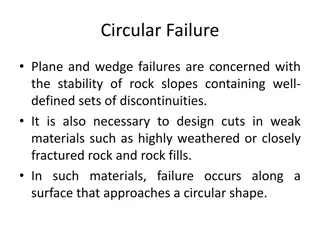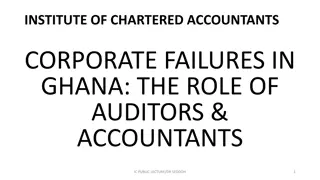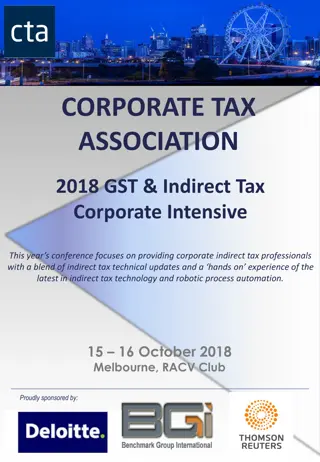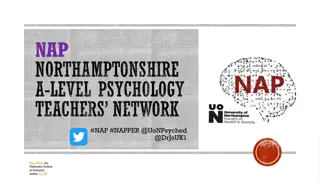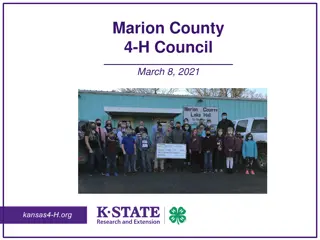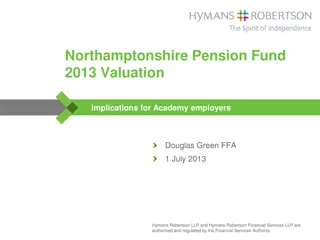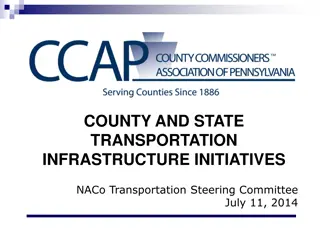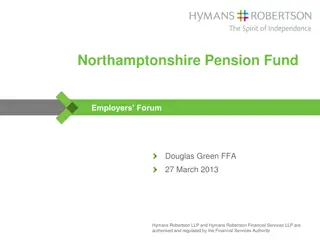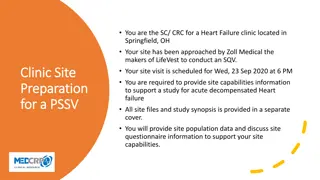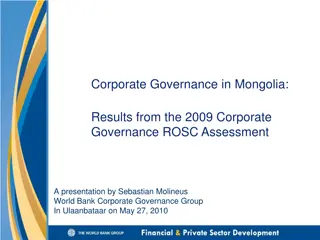Financial Failure and Corporate Intervention at Northamptonshire County Council: A Unique Perspective
This case study delves into the financial challenges faced by Northamptonshire County Council, leading to corporate intervention and government re-organisation. Explore the background, unusual government responses, and the shift in intervention triggers from scandals to self-reported failures. Discover the factors that set NCC's case apart and why there was limited opposition to the interventions.
Download Presentation

Please find below an Image/Link to download the presentation.
The content on the website is provided AS IS for your information and personal use only. It may not be sold, licensed, or shared on other websites without obtaining consent from the author.If you encounter any issues during the download, it is possible that the publisher has removed the file from their server.
You are allowed to download the files provided on this website for personal or commercial use, subject to the condition that they are used lawfully. All files are the property of their respective owners.
The content on the website is provided AS IS for your information and personal use only. It may not be sold, licensed, or shared on other websites without obtaining consent from the author.
E N D
Presentation Transcript
JUC PAC Annual Conference 2021 Financial failure and corporate intervention at Northamptonshire County Council: A sorry saga not a surprise How Place Matters? How Place Matters? Leadership, Governance Leadership, Governance and Public Administration and Public Administration Bernard Kofi Dom, Pete Murphy, Martin Jones De Montfort University Leicester 7th-8thSeptember 2021
Purpose of paper Austerity and reductions in financial support affected all LAs since 2010 so what was the background in NCC or what made the case of NCC different? Intervention was not triggered by a scandal it was NCC itself issuing two section 114 letters (the first for nearly 20 years) Uniquely the government response did not focus on the organisation (i.e. NCC) but on local government re-organisation. Interventions are usually very controversial but surprisingly there was relatively little public or political opposition. Why?
Between 2002 2010, corporate interventions followed Audit Commission external inspections revealing widespread poor performance in delivering services Since 2010 interventions have generally, been the result of scandals mostly in social services and children s services e.g. Rochdale, Birmingham, and Rotherham (Klonowski 2013, Kershaw 2014, Jay 2014). Background and Context All previous interventions and recovery, in both periods have focussed on the turnaround or recovery of the failing organisation NCC resulted from self-reported financial failure and local government reorganisation across Northamptonshire
Background in Northamptonshire CC In Feb 2018, the Section 151 officer reported NCC had depleted its reserves and the council didn t have the resources to meet expenditure commitments in the next two financial years. The government immediately called for an independent inspector to investigate the council s financial affairs. His report declared that NCC had failed to comply with its duty to provide best value in the delivery of its services primarily because it lost budgetary control and appeared to abandon strong and effective budget setting scrutiny (Caller 2018 p1). Although the inadequate financial controls were entirely the responsibility of NCC, the inspector also suggested that local government across Northamptonshire should be re-structured with two new unitary councils. Nevertheless the financial position deteriorated and in July 2018, NCC issued a second 114 notice after a budget shortfall of 70m and council advised that the spending limit would remain in place for the foreseeable future. In April 2021 (following consultations) the government created two new unitary authorities; (West and North Northamptonshire unitary authorities).
A case study primarily based on archival data. Methodology and Methods Extensive data and reports are available between 2002- 2010 under CPA and CAA. Although less rich data is available under the post-2010 Sector Led Improvement regime, this is still sufficient financial and service performance reports available for the purposes of this study The archival data has been supplemented by interviews with the former East Midlands Regional Office Northamptonshire Team (2003-2011). The study adopted the conceptual lens of institutional isomorphism Coercive; Mimetic; Normative (DiMaggio and Powell, 1991)
Analysis of CPA reports and audits reveal consistently poor service delivery, financial management and community leadership in NCC and in some of the District Councils; Findings 2002-2010 Analysis of Local Area Agreements, the response to the growth agenda and other partnership evaluations reveal NCC (and districts) were consistently poor at collaborative working NCC was not only poor at delivering its own services against its own priorities it was also poor at delivering services that required working in partnership with its key stakeholders including the district councils, to meet shared priorities.
Northamptonshires Local Area Agreements generally had the narrowest scope, the least challenging targets and the least innovation of the LAA s in the East Midlands. The authority still consistently struggled to meet their own objectives. The Local Area Agreements (Official 4. Government Office East Midlands)
Local Government as a whole experienced reductions of approximately 49% in real terms in central government financial support between April 2010 and March 2018 (NAO, 2019). Findings 2010-2018 Northamptonshire was not disproportionately affected in comparison with other county councils despite consistent NCC assertions (Caller 2018). External inspections of major services (Education and Adult Services), corporate peer reviews (e.g. LGA 2018), and annual external audits show continuing poor performance in service delivery, financial management and community leadership
Findings 2010-2018 (cont) Responsibility for the Police (2013) and Fire and Rescue Services (2019) was transferred by the government to commissioners Two implications worth noting 1. There was little local opposition from local authorities MPs or the populace to the imposition of a PCC or a PFCC in Northamptonshire 2. By transferring the non-hypothecated police budget and fire service budgets from NCC to the PFCC, the overall budget and NCC s operational financial flexibility to vire expenditure between budget allocations was reduced
The overall financial performance 2015-2018 Continued reductions in central government grant and limitations on council tax (NCC acknowledged they had not raised council tax by the maximum allowable over the previous years). NCC maintained a) that services were relatively underfunded by central government compared to other similar councils (NCC 2016b). b) They had abnormal pressures on services as a result of the growth agenda
Bucking the isomorphic trends? Prior to 2010 NCC bucked the trend of sector improvement under CPA seemingly resisting mimetic and normative responses Remained weak throughout CPA Only responding to higher level coercive pressures at the service level Lacked willingness/ability to collaborate effectively Post 2010 Continued to ignore mimetic and normative responses under sector led improvement Ignored routine coercive pressure eg audit reports . only subsequently responding to regulatory sanction (S114 x 2) And ultimately reorganised out of existence
The final tipping point? We are experiencing a significant financial crisis, but there is avoidance of the term and a lack of action appropriate for the situation we find ourselves in. At the heart of this is the corrosion of our financial management arrangements over the past eighteen months; there has been a change of culture and behaviour where overspending is acceptable and there are no sanctions for failure. (Caller 2018 p. 19)
Conclusions By 2018 the government had effectively run out of options for dealing with the existing organisation, it adopted the Best Value Inspector s suggestion and implemented local government reorganisation across Northamptonshire. Prior to 2010 despite a very strong isomorphic trend of improvement within the sector, NCC was following a non-isomorphic path ignoring or oblivious to isomorphic change elsewhere in the sector After 2010, NCC continued this non-isomorphic approach, largely ignoring the coercive recommendations of auditors until the eventual issuing of the first Section 114 notice. Prior to 2010 it received considerable external support as part of the improvement agenda which, mitigated the impact on its services and citizens. Following the adoption of austerity policies; dismantling of improvement infrastructure and the Audit Commission NCC inadequacies became less visible The section 114 notices did not arise from a single major financial challenge they were the final straws that broke the camel s back and the governments neglect.




